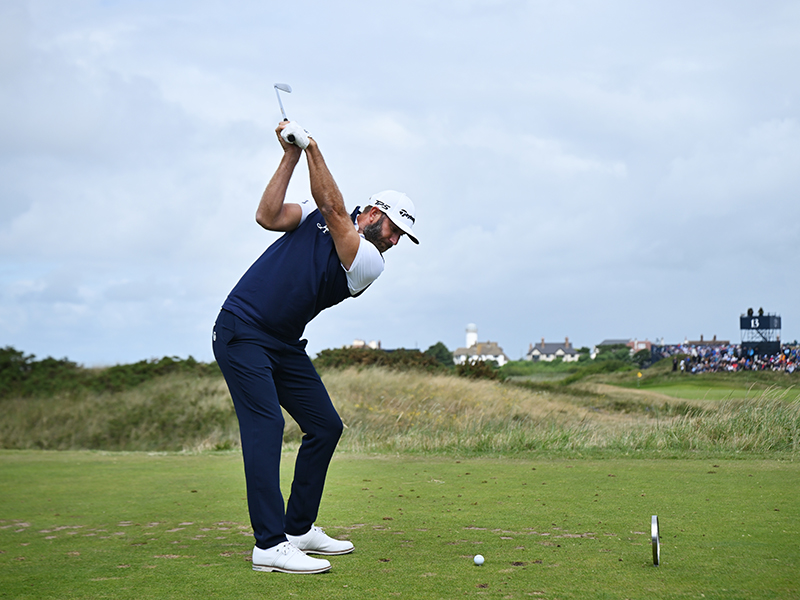7 Simple Faults That Are Killing Power In Your Golf Swing
These seven simple faults are causing you to leak power in the golf swing, and you might not even know you are doing them...


For any golfer wanting to improve their performance, power in the golf swing is crucial. Some players are great at generating power, but ultimately due to some common faults they end up leaking that hard-earned attribute before the ball is even hit.
In this article, we outline seven simple faults that are killing power in your golf swing...
1. Casting

Golf Monthly Top 50 Coach Katie Dawkins demonstrating casting in the golf swing
If you look at the golf swings of the best players in the world, one thing you will notice is the power they generate with seemingly very little effort expended. The key element here is the wrists, as they are the component that helps to create, store and unleash power through impact. In the backswing, your wrists will naturally hinge, but it's important to maintain this angle for as long as possible through the downswing.
This is referred to as lag, and it's one of the most simple ways to increase your clubhead speed and ultimately your power. The opposite to this is referred to as casting, which is releasing the angle in your wrists too early, sapping the power that you have created and stored in your backswing.
2. Reverse pivot
Weight transfer in the golf swing has a significant impact on both accuracy and power. Imagine you are hitting a tennis shot, you would transfer your weight forwards through impact with the ball, and the golf swing is no different.
Many golfers get hung up on 'helping' the ball to get into the air, meaning their weight remains on the back foot during the downswing. This is called a reverse pivot, and is another cause of power depletion and potential a slice.
If you struggle with this, this practice drill should help. After making your backswing, step forwards towards the target through impact, as this will force your weight to move in the correct way.
Subscribe to the Golf Monthly newsletter to stay up to date with all the latest tour news, equipment news, reviews, head-to-heads and buyer’s guides from our team of experienced experts.
3. Rotation

Dustin Johnson is a great example of excellent rotation in the golf swing
Under or over-rotation could also be a factor in your shots not travelling as far as you would like, but there is quite a simple formula to follow. In the backswing, you should turn your upper body around 90˚, but your hips should rotate about 45˚.
The difference between the angles created generate torque, which can help you to add speed to your downswing. One way to test your generation of power is to swing to the top of the backswing and pause. Correct rotation will feel uncomfortable in this position, and you should realise how tough it is to maintain this position.
4. Spin Rates
Every golfer delivers the club to the ball in a slightly different way. This is why custom fitting has become such a big part of the driver buying process. If your driver either spins too much or too little, you will be throwing away potential performance needlessly.
From getting the right shaft to setting up the head in a way to optimise your launch and spin rates, a modern driver fitting is bound to unlock extra performance, especially if you are using older equipment.
5. Extension

Tommy Fleetwood has what looks to be an effortlessly powerful swing
We have already mentioned the need for retaining the angle in your wrists for as long as possible in the downswing. However, just before impact you should release the angle in your wrists and let your arms fully extend through the ball, as Tommy Fleetwood is doing in the picture above. For many amateurs, power is lost as they retain the bend in their left elbow. This is often called a 'chicken wing'.
6. Strike
How close to the centre of the face is your strike pattern? If you are consistently catching drives out of the heel or toe you will be throwing away easy yards. A great tip is to spray some athlete’s foot spray on the face of your driver before you practice. This will highlight your strike pattern and help you identify how to find more centred strikes.
7. Balance

If there is one thing all great sports stars have in common, it's balance and great rhythm. As your weight shifts (firstly onto your back foot and then towards the target) during the golf swing, it is imperative you retain your poise.
Take Rory McIlroy, for example, who always holds his balanced finish position after completing his golf swing. Try this out the next time you have 30 minutes at the driving range – if your finish position is balanced and strong, chances are your swing will be too.

Baz joined Golf Monthly in January 2024, and now leads the instruction section across all platforms - including print and digital. Working closely with Golf Monthly's Top 50 Coaches, he aims to curate and share useful tips on every aspect of the game - helping amateurs of all abilities to play better golf. Baz also contributes weekly to the features section, sharing his thoughts on the game we love and the topics that matter most. A member at Sand Moor Golf Club in Leeds, he looks forward to getting out on the course at least once a week in the pursuit of a respectable handicap.
Baz is currently playing:
Driver: Benross Delta XT
3-Wood: Benross Delta XT
Hybrid: TaylorMade Stealth 4 Hybrid
Irons: Benross Delta XT 5-PW
Wedges: TaylorMade RAC 60, Callaway Jaws MD5 54
Putter: TaylorMade Spider Tour